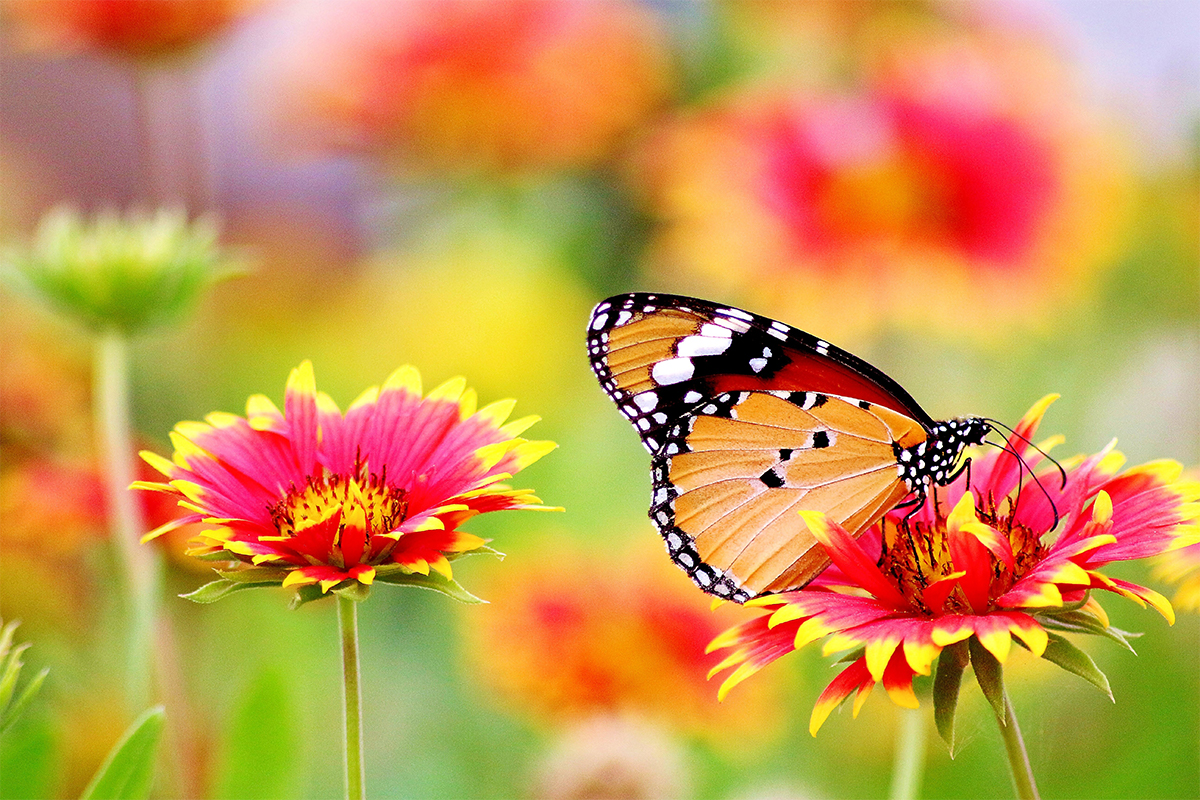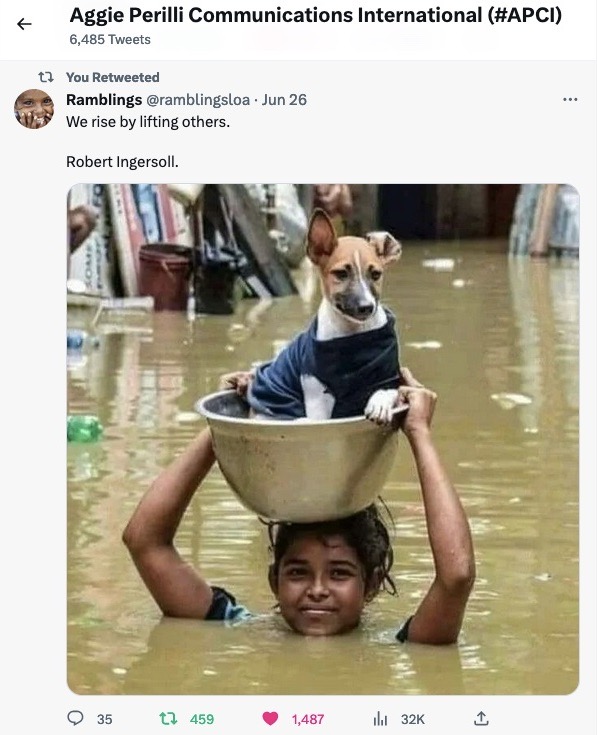 Keep Nature Wildly Beautiful
Keep Nature Wildly BeautifulThe introduction below was written by Dr. David Dobbins, Emeritus Professor of Plant Anatomy and Development, Morphology and Horticulture at Millersville University in Millersville, Pennsylvania. Following are seven easy steps to native organic landscaping. Enjoy how our wildly beautiful environment so restoratively awes and sustains us! -Aggie Perilli
Updated March 2, 2024
By Dr. David Dobbins
I grew up in the city of Indianapolis, with little exposure to nature, and had no real interest in our environment. All of that changed when I went camping with the Boy Scouts in Indiana, Kentucky, Ohio and Illinois.
Camping inspired my enthusiasm for nature, and, also, my career as a researcher and professor of biology, botany, horticulture and environmental science.
For 20 years, I engaged in research in the rain forests of Australia and Central and South America. While studying and teaching, my mind kept returning to the same question: “How did we allow our world to become so nonbiological and unnatural?”
Throughout my career, I’ve noticed stark changes in people’s attitudes. In our headlong rush to raise our standard of living, many of us completely shortchanged our quality of life.
We bought houses with lawns we admire but have little idea how to healthfully maintain.
Sprayed grass lawns consist of a single species. No thriving ecosystem in the world consists of a single species!
To maintain what is unnatural, some poison their grass with increasingly toxic herbicides, fungicides, and insecticides linked with deadly diseases. These carbon-releasing herbicides and synthetic fertilizers (and pesticides) that emit greenhouse gases from manufacture through application may be accountable for more than a third of climate change.
Fighting against nature has also led to the wholesale pollution of our air and soil, and streams, rivers, ponds, lakes and coastal areas. It is jeopardizing the safety and well-being of humans and animals, forests and essential plants and pollinator insects.
How can we restore and protect our natural environment? Plant native organic woods, meadow grasses and wildflower-rain gardens. These ecosystems provide habitats for the diverse organisms that form the bulk of our food chain.
In suburban areas where lawns are still the landscaping standard, maintain native and safely organic properties. Like wild parks, organic landscapes are most beautiful and allow all life to thrive.
Native Organic Landscaping in 7 Easy Steps
1. Allow chemically addicted landscapes to lie fallow for up to three years to withdraw from their harmful chemical dependency.
Raise your standards. Enjoy the healthful tranquility of restorative parks in your own yard and community.
2. Before treating any property, it helps to test your soil to discern the nutrients it may need.
Many states will test your soil at no charge. In Pennsylvania, you can buy a $9 testing kit at the county offices of Penn State’s College of Agricultural Sciences and submit soil samples for a free analysis.
3. If your soil is compacted, aerate it to improve your land’s natural drainage and vitality.
Use an aerator with hollow tines. Solid tines may further compact your soil.
Aeration and oxygenation in richly alive organic soil can naturally sustain itself.
4. Transform all or part of dull unhelpful lawns into organic native habitats where pollinators and wildlife thrive!
Avoid carcinogenic and other costly carbon-releasing killing agents linked to chronic health conditions, climate change, and that repel and kill our essential pollinators. They also kill the healthy microorganisms in richly alive soil, and poison our air and water.
Rather than prevent weeds, counterproductive herbicides exacerbate the deadening conditions that cause weeds to spread. Similarly avoid harmful synthetic fertilizers that emit greenhouse gases from manufacture through application. If necessary over the summer, lightly apply an organic mix of the fertilizer recommended in your soil analysis.
5. Use your leaves as mulch. Hand weed and grow organic native trees and unsprayed self-seeding meadow grasses and pollinator flowers and plants.
To reduce the need for hand weeding and mulch that can attract termites, plant native woods, spreading shrubs, and fields of pollinators. Transform at least part of your property into a stunning native wildlife habitat!
Shop at organic nurseries. Other nurseries may erroneously spray killing agents found harmful to all life.
If your garden has poisonous weeds you may be allergic to, place your weeding hand in two solid bags that extend past your elbow. Pull the weeds and place them in an opened garbage bag. From the top, slip the weeding bags off your arm and into the garbage carefully to avoid skin contact.
6. Avoid weakening your property by micromanaging it.
Allow grass to grow as tall as municipal law allows. Leave your grass with nutrient-rich blades tall enough to shade out weed seeds. A thick turf can sustain itself.
7. In autumn, seed or over-seed your lawn or just areas weedy or bare.
Buy safely uncoated organic seeds suited to your soil, climate and land use. Select seed varieties native to your area.
Encourage land owners and landscapers shifting to safely chem-free organic landscaping to persevere.
It can take up to 3 years for a chemically deadened property to return to its wildly beautiful nature. – Aggie Perilli
How is organic landscaping (and agriculture) raising the quality of all life in your area?
Aggie Perilli is president of Aggie Perilli Communications International (APCI).
Note: If you find this post helpful, you can subscribe to my blog here at no charge! Thank you for sharing your insights here on Facebook and Twitter.
Recommended Media
Beyond Pesticides’ free Parks for a Sustainable Future program.
Products Compatible with Organic Landscape Management and Organic Lawn Care 101 by Beyond Pesticides.
Tools for Change from Non-Toxic Communities that thrive in wildly beautiful and cost-effective organic landscapes.
Alternatives to Synthetic Products for Managing Landscapes and Pests
New Alarm Bells About Chemicals and Cancer by Nicholas Kristof.
Pollinators Are in Trouble: Here Is How Transforming Your Lawn Into A Native Wildflower Habitat Can Help by Discover magazine.
Bringing Nature Home – How You Can Sustain Wildlife with Native Plants by Douglas W. Tallamy.
Documentaries: Down to Earth with Zac Efron, Kiss the Ground with Woody Harrelson, The Biggest Little Farm, and more.
Organic Manifesto by Maria Rodale.
Silent Spring and any communications by Rachel Carson.


